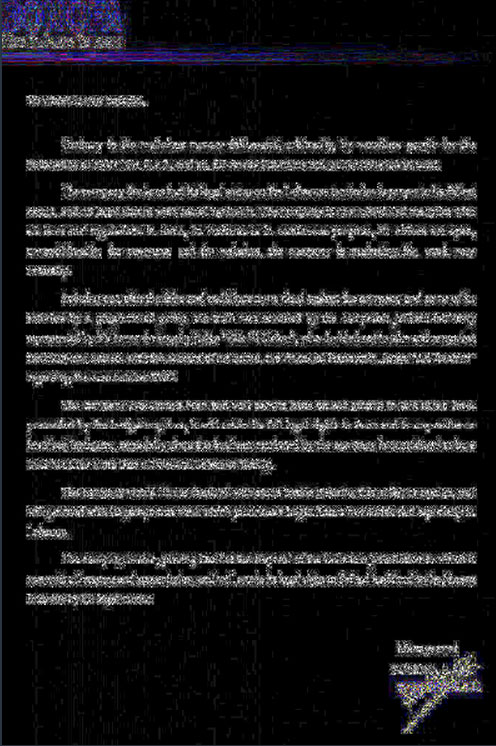Bonofa given all-clear in Lebanon?
![]() A new letter from Bonofa appears to have surfaced, and claims that the company might be clear of troubles in Lebanon.
A new letter from Bonofa appears to have surfaced, and claims that the company might be clear of troubles in Lebanon.
Last we reported, a Bonofa executive had been arrested entering Lebanon, and a case had been filed against the company by Public Prosecutors. Case “GZ 2207/2014” was filed in early May, and is purportedly supported by 3000 pages of collected evidence.
Now, if this latest letter is to be believed, Bonofa are claiming their
legal status on the Lebanese territories is proper to its fullest extent, and no legal claims were found against it.
How odd.
The letter, riddled grammar mistakes and unconventional use of the English language, is undated and simply signed off on by “Bonofa Management”.
Addressing reporting of the criminal investigation into the company and arrest as “malicious rumor” written by a “programmed group”, the letter reads more like something put together by an over-zealous affiliate rather than an official corporate communication.
Then again, Bonofa did initially deny anybody had been arrested in addition to there being any criminal investigation opened against the company, so who knows.
Feeling curious, I fed the letter through FotoForesnsics’ error-level analysis tool:

Error-level analysis is hardly conclusive, but the darker coloring around the signature and header does suggest a discrepancy (the text was copy and pasted onto a letterhead with signature).
My first thought was that someone might have just copied the letterhead and signature that emerged on an Arabic letter that surfaced recently, confirming both the investigation and arrest. After looking at the signatures present on both documents though, I’ve concluded that not to be the case.

Still, casting further doubt on the authenticity of the message is that it does not feature on Bonofa’s website, their Facebook profile, Twitter feed or Google Plus profile.
One would think something like this would be of significant importance to the company’s affiliates, and they’d be doing everything they could to communicate the message to them.
Instead, the communication only appears online over at “Bonofa Universe Team”, a Bonofa blog run by affiliate Ibrahim Wazneh.
Anyway, even if we assume the letter is legitimate, I’m having a hard time reconciling Lebanon’s stance on what is clearly a Ponzi investment scheme.
As per their business model, Bonofa accept 299 EUR to 2499 EUR investments from their affiliates, on the promise of a “profit-share” tied into their Cube7 social network.
The only problem is, despite Bonofa going into prelaunch in early 2013, Cube7 hasn’t officially launched yet.
Despite that however, this latest Bonofa letter claims
the company is considered to be a livelihood for for more than a thousand Lebanese family (sic).
That of course raises the question, “What are they paying these families with then?”
A clue can be found on Bonofa’s Facebook page, in this comment left just a few hours ago:

Can someone help me please. I’m a member of bonofa my sponsor invited me about 6 months ago then never heard of him again.
I have paid €300 and I still don’t know how it works!!! Any advice guys!! Thanks
You and I know Bonofa are simply shuffling new affiliate money around to pay the livelihood of Lebanese families, and no doubt prosecutors in Lebanon know it too. Therefore it does seem rather strange to suggest that a criminal investigation would just abruptly disappear.
Definitely a bit of a weird story to follow this one. I think I’ll leave it in the “hmmm” basket for now…
Footnote: As sourced from Bonofa Universe Team, the recent Bonofa letter can be viewed below:

Update 26th April 2024 – Following their arrest in 2016, Bonofa ringleaders have received 6 to 7 year prison sentences in Germany.


Actually, since the signature is of a different color, it won’t be that hard to isolate it and put it on a different letter with different wording around it.
If they did it to a black and white letter I’d be more impressed.
Also, i note that the signature and the blue “stamp” is IDENTICAL across both letters. Only the black part (i.e. letter itself) is different. Chance of the stamp hitting the signature at the EXACT SAME SPOT, without a pixel different, is negligible.
The English version may be a translation, it may even be “accurate”, but it’s probably not an “original”.
The way the signature is identical in both is rather suspect, that much I’ll agree with.
Someone went to a lot of trouble to try and pass it off…